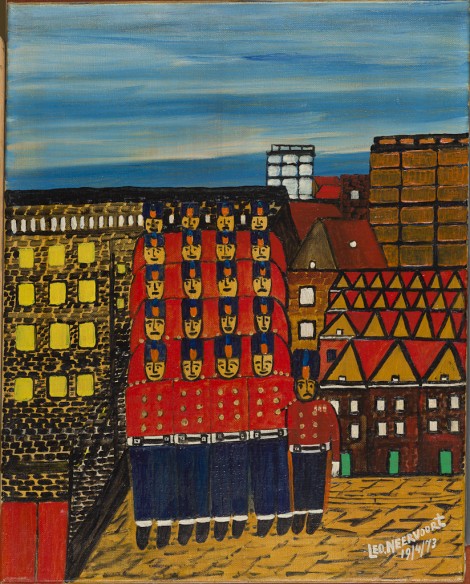Military formation
— Neervoort, Leo
A military convoy slides like a brightly coloured block through the narrow streets of the city. Neervoort always chose a high viewpoint in order to be able to pile the individual faces on top of each other. Each face is reduced to a black contour with stripes for eyebrows, eyes, nose and mouth. While we, the viewer, look at the soldiers straight in their flat faces, we also see the tops of their black shoes. Neither size nor scale are important.
Leo Neervoort painted landscapes, often as the backdrop for a curious crowd of people gathered around an explosive fire, for example, or the rescue of a drowning. He became primarily famous with such paintings of crowds at major events, parades, ceremonies, sporting competitions: Queen’s Day, Prince’s Day, the Council of Rome, the fleet review, fireworks, etc. In the 1970s his compositions became increasingly fuller and tighter, the multitudes en bloc, in tight hedges and columns. There is then hardly any difference discernable between the facades on one side with their rhythms of nature, or bricks, windows or panes of glass and on the other side the tightly packed rows of resplendent, military guards.
Reference: Zdunic, Drago; Primitive Painting, Zagreb 1986, p. 155.
